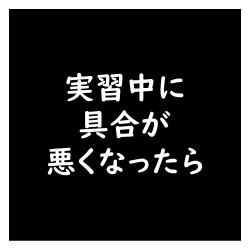目次
起立トレーニングで脳卒中後の嚥下障害が改善する
脳卒中後の嚥下障害に対しては言語聴覚士が主に間接的・直接的介入を行うことが多いです.
理学療法士・作業療法士もまた姿勢や環境設定の面から嚥下に介入する機会は少なくありません.
ただ興味深い論文が公表されました.
起立トレーニングで脳卒中後の嚥下障害が改善するというのです.
今回は起立トレーニングで脳卒中後の嚥下障害が改善するといった論文をご紹介させていただきます.

今回ご紹介する論文
ORIGINAL ARTICLE: Epidemiology, Clinical Practice and Health
Chair‐stand exercise improves post‐stroke dysphagia
Yoshihiro Yoshimura Hidetaka Wakabayashi Fumihiko Nagano Takahiro Bise Sayuri Shimazu Ai Shiraishi
First published: 09 August 2020 https://doi.org/10.1111/ggi.13998 Geriatr Gerontol Int 2020; ••: ••–••
今回ご紹介する論文は2020年に公開されたばかりの新しい論文です.
本邦で行われた臨床研究ですね.
研究の目的
To elucidate the effects of whole‐body exercise on clinical outcomes, including dysphagia status, between stroke patients with dysphagia who are undergoing convalescent rehabilitation.
この研究では起立トレーニングによる全身運動が,嚥下障害を有する脳卒中例と回復期リハビリテーションを受けているクライアントにおける嚥下障害に与える影響を明らかにすることを研究目的としております.
研究の方法
This retrospective cohort study included consecutive patients with post‐stroke dysphagia in a rehabilitation hospital in Japan between 2016 and 2018. Dysphagia was defined as a Food Intake Level Scale (FILS) score <7. Participants were asked to perform a repeated chair‐stand exercise as a whole‐body exercise in addition to the convalescence rehabilitation program. Study outcomes included the FILS score and presence of dysphagia at discharge, the Functional Independence Measure‐motor (FIM‐motor) score and length of stay. Multivariate analyses were used to determine whether the frequency of daily chair‐stand exercise was independently associated with study outcomes, after adjusting for potential confounders; P < 0.05 was considered statistically significant.
この研究は後ろ向きコホート研究となっております.
2016年から2018年の間に本邦のリハビリテーション病院で脳卒中後の嚥下障害を発症したクライアント(連続例)を対象としております.
嚥下障害は、FILS(Food Intake Level Scale)スコア<7と定義し,参加者には、回復期リハビリテーションプログラムに加えて,全身運動として椅子からの起立トレーニングを繰り返し実施しております.
研究のアウトカムは,退院時のFILSスコアと嚥下障害の有無,Functional Independence Measure-motor(FIM-motor)スコアと在院期間となっております.
多変量解析を用いて,潜在的な交絡因子を調整した後,起立トレーニングの頻度がアウトカムに独立して関連しているかどうかを明らかにしております.
研究の結果
Of the 637 patients admitted, 148 stroke patients with dysphagia (mean age 72.7 years; 48.6% men) were included in the final analysis dataset. The median daily frequency of repeated chair‐stand exercise was 36 (12–65). In multivariate analyses, the frequency of chair‐stand exercise was independently associated with the FILS score at discharge (β = 0.231, P = 0.015), the presence of dysphagia at discharge (odds ratio: 0.982, P = 0.035), FIM‐motor at discharge (β = 0.205, P = 0.008) and its gain (β = 0.237, P = 0.013), and length of hospital stay (β = −0.042, P < 0.001).
入院した637例のクライアントのうち,嚥下障害を有する148例の脳卒中例(平均年齢72.7歳、男性48.6%)が最終解析データとなりました.
起立トレーニング下肢回数の1日の中央値は36回(12~65回)でありました.
多変量解析において,起立トレーニングの頻度は,退院時のFILSスコア(β=0.231、P=0.015),退院時の嚥下障害の有無(オッズ比:0.982、P=0.035),退院時のFIM運動(β=0.205、P=0.008)およびその獲得(β=0.237、P=0.013),および入院期間(β=-0.042、P<0.001)と有意な関連を認めました.
研究の結論
Chair‐stand exercise is associated with preferable clinical outcomes, including dysphagia status, activities of daily living and length of hospital stay, in stroke patients with dysphagia. Post‐stroke dysphagia rehabilitation should include whole‐body exercises in addition to conventional rehabilitation programs.
全身運動としての起立トレーニングは,嚥下障害を有する脳卒中例において,嚥下障害,日常生活動作能力,在院期間と関連していることが明らかとなりました.
脳卒中後の嚥下障害リハビリテーションは,従来のリハビリテーションプログラムに加えて起立トレーニングなどの全身運動を含めるべきである可能性があります.
今回は起立トレーニングで脳卒中後の嚥下障害が改善するといった論文をご紹介させていただきました.
今回の研究論文の研究デザインは後ろ向きコホートですので,因果の逆転が生じている可能性は否めません.
つまり起立トレーニング回数が多い症例はもともと嚥下障害が改善しやすい症例である可能性があります.
今後はランダム化比較試験等の介入研究デザインを用いた研究が望まれます.







コメント